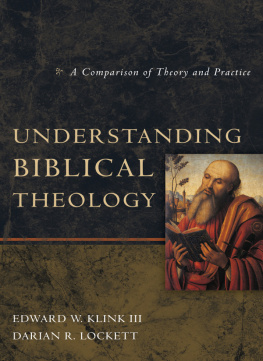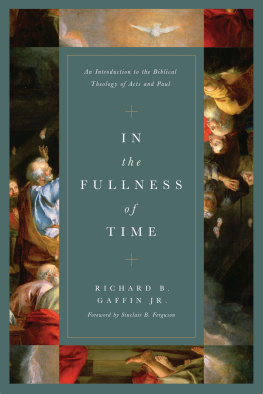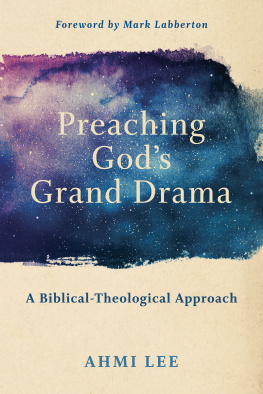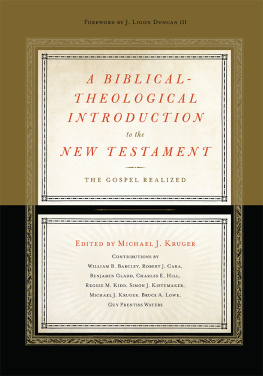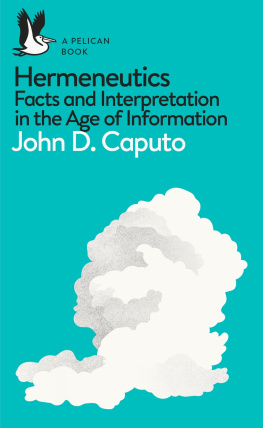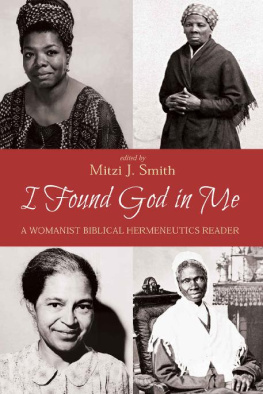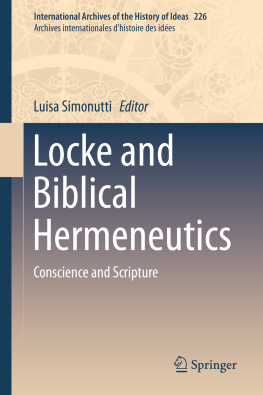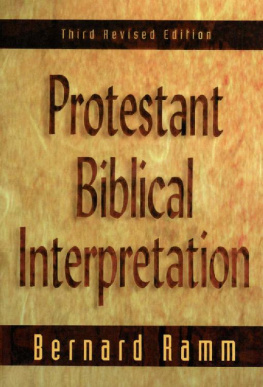FIVE VIEWS
EDITED B Y Stanley E. Porter & Beth M. Stovell
WITH CONTRIBUTIONS BY Craig L. Blomberg, Richard B. Gaffin Jr., F. Scott Spencer, Robert W. Wall & Merold Westphal



.............. 5
................ 7
.... 9
Stanley E. Porter and Beth M. Stovell
PART ONE: FIVE VIEWS OF BIBLICAL HERMENEUTICS
.. 27
Craig L. Blomberg
...... 48
F. Scott Spencer
.... 70
Merold Westphal
...... 89
Richard B. Gaffin Jr.
.......... 111
Robert W. Wall
PART TWO: RESPONSES
Craig L. Blomberg
..... 146
F. Scott Spencer
Merold Westphal
.... 174
Richard B. Gaffin Jr.
........ 188
Robert W. Wall
............ 201
Stanley E. Porter and Beth M. Stovell
............ 211
........... 213
............. 223



W would like to extend our thanks to all of our contributors, Craig Blomberg, Richard Gaffin, Scott Spencer, Robert Wall and Merold Westphal, for sharing their time and insight on this project. We realize that producing a volume such as this is in some ways more difficult than others, because it requires not only that the contributors write to particular specifications but also that they do so to specific deadlines, and that they do this twice, once in submitting their major position paper and again in response to the work of their fellow contributors. We appreciate their attention to deadlines and details. We also wish to thank Dan Reid at InterVarsity Press for his editorial supervision on this project in the Spectrum series. We believe that InterVarsity Press has done an excellent job in promoting a series that addresses important issues in serious ways, admitting to the existence and encouraging discussion of disparate and challenging viewpoints.
Stan would like to thank his wife, Wendy, for her extraordinary support and encouragement during the completion of this project. Those who know us will know that this project was being completed at a time when it was uncertain how not only this project but also life itself would unfold. God has proven himself to be faithful, gracious and loving throughout-not that he needed to prove himself to us or to anyone else. God certainly made the truth of 1 Corinthians 10:13 come to life in a vivid and affirming way. Stan would also like to thank Beth Stovell for being willing to undertake this project together and for her carrying the major burden of correspondence with the authors and organizing the electronic paperwork as it came together. It has been a pleasure to work together, and Stan wishes her congratulations on her new position at St. Thomas University. Stan finally wishes to thank his colleagues, as well as his excellent Ph.D. students (of whom Beth began as one), at McMaster Divinity College not only for providing a unique and rewarding environment for serving as president and dean of the college but also for allowing him to indulge his love for the study of God's Word as revealed in the New Testament.
Beth would like to thank her husband, Jon, for his encouragement over the four-year process of envisioning and coordinating this volume. His humor and insight have been an ever-present help and support. She would also like to thank Stan for the opportunity to work together on this project. This experience has been a great joy. The way he has shared his guidance and experience with her along this journey has been beneficial to her professional development, meaningful to her personally and, of course, invaluable to this project. Finally Beth would like to thank her colleagues at McMaster Divinity College and St. Thomas University for their insights and support.
We finally wish to thank our readers of this volume. We hope and pray that this volume will provide new insights into biblical hermeneutics and how such interpretive models might aid in biblical understanding and interpretation.

This very tension in defining the concepts of biblical interpretation, hermeneutics and exegesis leads to one of the major questions influencing the debates in this book, which in turn justifies its creation. Anthony Thiselton, one of the leading figures in biblical hermeneutics, especially in evangelical circles, provides a helpful distinction among these important terms:
Whereas exegesis and interpretation denote the actual processes of interpreting texts, hermeneutics also includes the second-order discipline of asking
only that it is difficult to capture the diversity of the discipline from a vantage point that focuses on procedure, history, or even the perspective of a single viewpoint or author.
This book represents a new way of presenting several of the major views within biblical hermeneutics. Rather than introducing the individual hermeneutical approaches in survey fashion or providing a step-by-step instruction guide to interpretation, this book provides a forum for discussion This survey will highlight some of the key questions and issues in debates surrounding the subject of biblical hermeneutics. It will then place the particular views represented in this book in that broader context and explain the structure of the book.
A BRIEF HISTORY OF THE DEVELOPMENT OF BIBLICAL HERMENEUTICS
Nevertheless, our threefold orientation to the text provides a useful framework for capturing the major issues in biblical hermeneutics as they have unfolded. As a result of the shape of this volume, we will orient our comments specifically, though not exclusively, to New Testament hermeneutics on interpretation, but without neglecting the Old Testament.
not all traditional critics would accept all of them or emphasize them in the same way.
Seeking the original meaning of the text sounds somewhat similar to the goals of scholars looking "within the text" (see the next section below), yet the traditional search for the original meaning of the text not only
With this shift, many biblical scholars inadvertently (or sometimes intentionally) removed both authorial intent and historical background from the equation, replacing these with an emphasis on poetics, narrative and textual unity. Poetics includes an emphasis on the literary or even rhetorical means by which texts are constructed and convey their literary quality, such as the use of character, setting, irony, metaphor, symbolism and other literary tropes. Narrative-in part because the New Testament does not contain much if any genuinely poetic material-is the dominant genre or textual type of the New Testament, as well as constituting much of the Old Testament. Scholars came to emphasize and interpret elements of narrative, such as plot (motivated events) and the literary opening, closing and development. Emphasis on the autonomous text also led to a focus on textual unity, in which all of the elements of the text, even those in tension, contributed to its overall sense.


